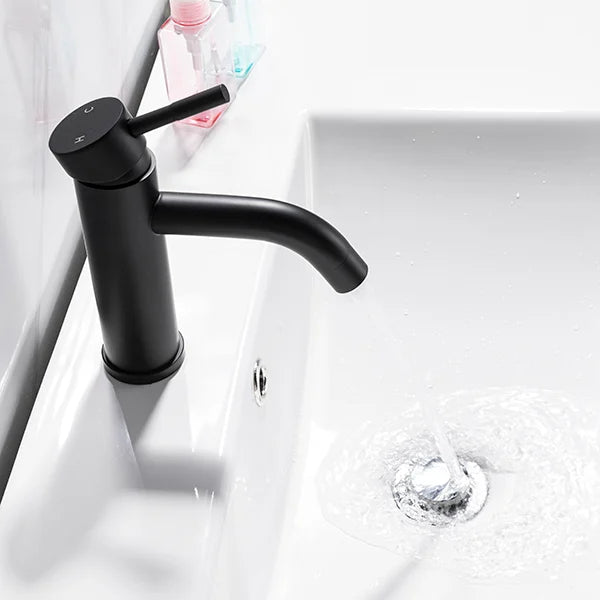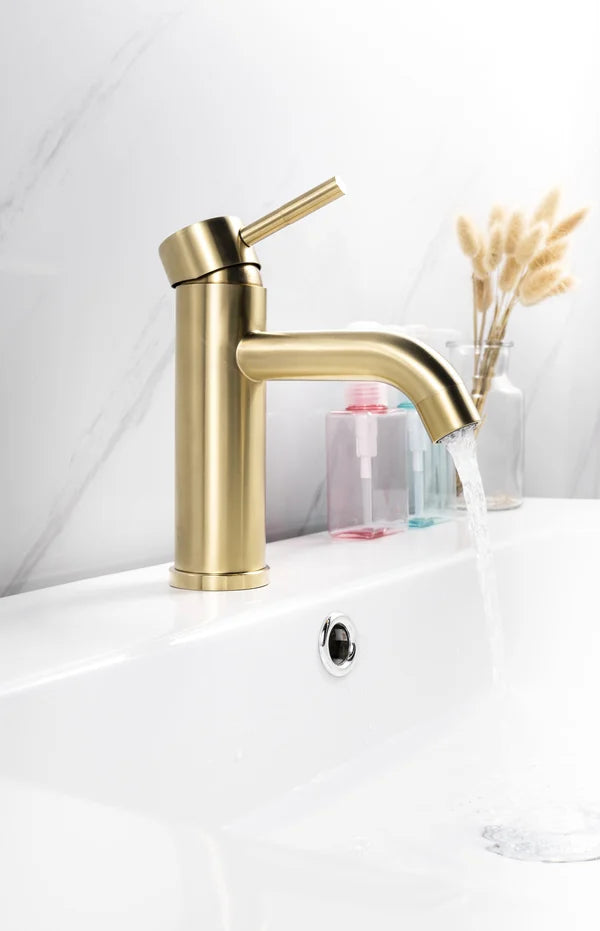Style that stays looking good: How to care for your bathroom faucet
When you’ve just invested in a smart new bathroom faucet, it’s natural that you’ll want to keep it looking new for as long as possible. But it’s a frustrating fact that, as the one room in the house where we all go to get clean, the bathroom itself is prone to accumulating a lot of dirt – and your new faucet isn’t immune.
Water marks, limescale, mold and general grime can, over time, leave a shiny new faucet looking dull and unloved. And when it comes to special finishes like matt black or brass, it can be tricky to know how to clean your faucet effectively, without damaging the finish.
In this blog, we’re going to take a look at some general tips for cleaning and maintaining your new bathroom faucet, as well as the appropriate way to care for special finishes, and also a few insider tips for keeping your new faucet looking box-fresh for longer.
Why is it important to clean my bathroom faucet?
Apart from the obvious desire to keep your new bathroom faucet looking beautiful, there’s also a very real need to remove bacteria from its surfaces. Typically, the first thing someone touches after flushing the toilet is the faucet, which means your faucet lever is at risk of contamination from germs and bacteria that could make you and your family sick.
It’s also important to remove buildup of limescale or mold from your faucet. Limescale can cause damage to the decorative finish of your faucet, and may also cause moving parts to seize up or corrode if left untreated for long periods. Mold growing around the water outlet can also contaminate the water, and cause unpleasant smells.

What’s the best way to clean my bathroom faucet?
To remove everyday dirt and germs from your bathroom faucet on a day-to-day basis, all that’s required is a soft cloth, some hot water and a gentle, non-abrasive detergent. This combination of ingredients will be enough to remove light soiling and also kill any germs that are lurking.
Simply wipe the faucet all over with a hot, soapy cloth, paying attention to hidden surfaces like the reverse of the stem and the underside of the lever. If you notice limescale or mold buildup around the water outlet, or if your water supply is spraying, your faucet’s aerator may be blocked.
The aerator can usually be removed by unscrewing it in an anti-clockwise direction from the spout. For internal aerators, refer to the manufacturer’s instructions - or contact the Artos customer support team. Rinse well to remove any dirt that’s blocking the mesh, using a stiff brush for stubborn dirt. If there’s a buildup of limescale, you can soak the mesh in equal parts water and white vinegar to remove it.
To prevent streaking and water marks, you may wish to polish your faucet when it’s dry using a microfiber cloth. You can buy products specifically for polishing metal hardware, but you should check the label carefully to ensure they are safe to use on your faucet’s particular finish.
Pro tip: Polished finish faucets can be prone to water marking. Prevent this by waterproofing your faucet using a wax candle. Simply rub the candle directly onto the surface of the faucet, then polish until shiny again. Water will magically bead and run off the surface without leaving a mark!

How do you clean a matte black faucet?
You can clean a matte black faucet in the same way as a chrome or stainless steel faucet, using hot soapy water and a soft, microfiber cloth. Limescale deposits can be removed using a 50:50 solution of water and white vinegar - you should rinse well afterwards to remove all traces.
Matte black faucets have a powder coated finish so it’s really important not to use any caustic or abrasive cleaners that could scratch the surface of the faucet - and never use a scrubbing brush or steel wool. Find more tips on caring for your matte black faucet.

How do you clean a brass bathroom faucet?
Brass faucets are extremely fashionable right now, and while they are made from one of the most durable materials available, they do require some extra care to keep them looking good.
Brass doesn’t rust or corrode, but it does develop a natural surface patina that turns it from a bright, yellow-colored metal to a dull, brownish-green shade. For most people, this is undesirable - so many brass faucets are finished with a protective resin coating that prevents the surface from tarnishing. These faucets should be cleaned in the same way as chrome or stainless steel faucets, taking extra care not to scratch or wear the coating in any way.
Artos brass faucets have a PVD finish. PVD stands for Physical Vapor Deposition and is a process whereby a solid metal like brass is vaporised in a vacuum and then deposited, atom by atom, onto another surface like stainless steel. It’s not a coating - rather the brass actually becomes part of the base material, and takes on some of its properties. As a result, PVD brass won’t tarnish or wear off over time, and can be cleaned using any household detergent.
How do I clean my tub filler / hand shower?
If your bathroom has a tub filler with a hand shower attachment, you can clean all the parts in the same way as you would clean a lavatory faucet. If you notice that the flexible shower hose has become clogged or is looking dirty, remove it from the faucet and soak for a few hours in a basin of warm, soapy water with a few drops of white vinegar. A quick wipe down and a good rinse through should be all you need to get it looking and feeling like new.
Got questions?
If you’re unsure about how to care for your Artos plumbing fixtures - or if you’ve noticed issues with an older faucet such as leakage - our customer support team will be happy to advise you on the best course of action. We’re often able to provide solutions over the phone, or send out replacement parts that can resolve your issue. Get in touch to find out more!
